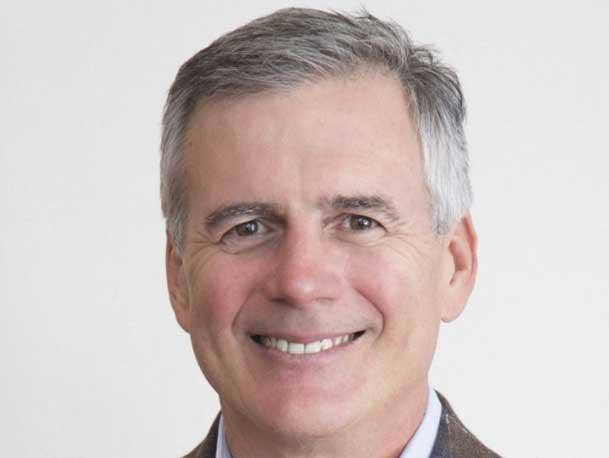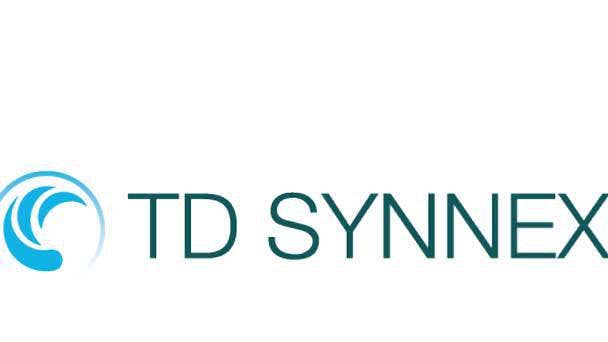TD Synnex CEO: Supply Chain Issues Diminishing, Cloud Builds Momentum
‘I suspect that by the time we get to the middle of 2023, most of [the data center and infrastructure supply chain] will begin to sort itself out, barring any unforeseen future circumstances. I think that the back half of next year should offer across-the-board ‘pre-COVID’ serviceability from a supply chain perspective,’ says TD Synnex CEO Rich Hume.

Supply Chains, Clouds, And Investors: TD Synnex
A little over a year ago, Tech Data and Synnex merged to create TD Synnex, the biggest IT distributor on the planet. In that year, TD Synnex, and IT distribution in general, have been wrestling with continuing issues around supply chains, macroeconomic trends, and customer adoption of cloud infrastructure vs. traditional data center infrastructure.
Those issues haven’t gone away, but they are having less of an impact over time, said TD Synnex CEO Rich Hume. For instance, Hume recently told CRN that IT supply chain issues for the PC side of the business have pretty much been sorted out, while many parts of the data center and infrastructure side of IT are still experiencing delays.
And yet, Hume said, those delays also come at a time when business appetite for hybrid cloud solutions, which combine on-premises private cloud with public cloud capabilities, is growing, which plays into the strength of the IT channel and IT distribution.
[Related: 5 Things To Know About The $7.2B Synnex-Tech Data Merger]
“We’re positioned to meet that hybrid need of a mix of public and private cloud based on the capabilities that we’ve built out,” he said. “And the way I think about it is, our customers really are helping to design these private cloud deployments. And we’re prepared to be able to deliver in either a physical delivery model or a virtual delivery model.”
At the same time, changing business IT solution requirements is pushing suppliers to find new ways to bring emerging technologies to the fore, Hume said. As a result, TD Synnex’s Advanced Solutions business has now pretty much become synonymous with emerging technologies, he said.
“Internally, we say our Advanced Solutions business is the emerging technologies, or our emerging technologies is our Advanced Solutions business,” he said. “So it‘s become so ingrained, and it’s such a large part of the entirety of the Advanced Solutions organization, that they really are seamless when we think about building private clouds or delivering infrastructure.”
There’s a lot going on at TD Synnex and in IT distribution as business IT requirements continue to evolve. For a look at what’s happening, click through the slideshow.
Note regarding the word “customer” – Hume, like many in the IT distribution community, use the term customer to refer to solution providers, who are the customers of distributors. He is not referring to the end users. Hume, in a reflection of his days at IBM, also uses the IBM term “business partners” to refer to solution providers.

What are the remaining supply chain issues, and how is that impacting your solution provider customers?
I’d like to split the conversation into two pieces. When COVID came, work from home spiked the PC ecosystem to unprecedented levels of requirements across the world. During the first three quarters of COVID, people refrained from physically coming into the office which delayed project business, which typically is data center infrastructure work. Today, for the most part, PC ecosystem supplies are available. Just about anything you want you can get. So that is all stabilized. But because of the phasing of the deferral of the data center and infrastructure stuff, we still face as an industry supply chain challenges around that major category. And I suspect that by the time we get to the middle of 2023, most of that will begin to sort itself out, barring any unforeseen future circumstances. I think that the back half of next year should offer across-the-board ‘pre-COVID’ serviceability from a supply chain perspective.
Are there any products in particular that have caused special issues for your clients?
Data center stuff in total, and maybe the one that‘s a little bit longer pull would be networking. We still have a pretty significant backlog in what we call Advanced Solutions, the data center and infrastructure categories.
Does that include storage? Storage vendors seem to say that they have few issues.
Well, I‘m glad you brought that up. I would say there are shorts and longs in all of Advanced Solutions products, and maybe storage is a little bit more available.

So for the things that are in short supply, are you able to offer good substitute products or not?
There‘s really two sides to this story. The first one is, I think the world has adjusted to lead times. Halfway through COVID, end users understood that lead times adjusted. So I think that whole planning module had adjusted, which was a big relief. And yes, I’m sure that some substituting is occurring in the data center infrastructure sort of categories, but it‘s probably more the exception than the norm. Rather, the adjustment to planning for longer lead times halfway through COVID I think allowed for more continuity.
Have you seen in your channel partner customers any impact from supply chains on their customers decisions to move to more cloud type operations?
I think that clearly in the front end and through the mid of COVID, there was an obvious accelerated public cloud growth. For me now, I see hybrid cloud is really the star of the show in mixed environments with more precision relative to what should be kept on-prem or off-prem. It’s anecdotal and a bit speculative, but I think a bit more of a balance between traditional private cloud and public cloud. Certainly, the growth rates of cloud in total will continue to outpace the average of the market. But I think there‘s good opportunity in what I call the hybrid category, both private and public, moving forward.

How has that changed TD Synnex’s approach to the cloud business, both private clouds or public clouds?
First of all, we‘ve had a traditional infrastructure business globally for a very long time. And that solid foundation becomes the precursor to participating in a hybrid cloud environment. And then, somewhere around eight years ago or so, we began to build our platform capabilities around public cloud. And as we move through time, those features and functions and capabilities become stronger. We’ll continue to invest in our platforms moving forward for the foreseeable future. So we‘re positioned to meet that hybrid need of a mix of public and private cloud based on the capabilities that we’ve built out. And the way I think about it is, our customers really are helping to design these private cloud deployments. And we‘re prepared to be able to deliver in either a physical delivery model or a virtual delivery model. Those capabilities are there today.

So how does it impact what you do next year then? Do you have any strategies for making TD Synnex a bigger part of your partner’s cloud experience?
When you take a look at our overall portfolio, there‘s a heavy tranche of our business that is data center and infrastructure. And we talk about these emerging technologies: cybersecurity, cloud, analytics, IoT, just to name a couple. And internally, we say our Advanced Solutions business is the emerging technologies, or our emerging technologies is our Advanced Solutions business. So it’s become so ingrained, and it‘s such a large part of the entirety of the Advanced Solutions organization, that they really are seamless when we think about building private clouds or delivering infrastructure. I mean, it was an extension of that base. And that’s what has allowed us to be able to effectively serve the market in that regard.
As we look forward, the investment in emerging technologies [including] cloud is incrementally up each and every year. And so every year, we‘re investing more to support more growth. Our high growth business areas, which are all that I named—cloud, cybersecurity analytics, IoT, hyperscaler technology—they’re beginning to approach 20 percent of our gross billings. So it’s becoming a very meaningful part of that basket of high growth areas of our overall business.

You said, your Advanced Solutions business is the emerging technologies, or your emerging technologies is your Advanced Solutions business. The word ‘or,’ is that you correcting the first part, or are both happening?
It’s both things happening. There was a tipping point, maybe four or five years ago, where we would think about emerging technologies—again, cloud, cybersecurity, analytics, IoT, etc.—separately. Now, the mentality internally is our Advanced Solutions business is the emerging technologies, or the emerging technologies are our Advanced Solutions business. Obviously, there‘s a lot of legacy in there, but now they’re inseparable components.
What are some of the kinds of investments TD Synnex is making for next year? Can you give us some hints about some things we might see next year in terms of the Advanced Systems and the emerging systems and the cloud
I would say that maybe we‘re boringly consistent. For the better part of five years, we’ve been on this thrust of cloud, analytics, IoT, cybersecurity, hyperscale infrastructure. AR (augmented reality) and VR (virtual reality) are new adds to that overall pool. But it is in those areas that we’re continuing to grow, grow, grow. We‘ve added quite a few new vendors in each of our line cards in those areas. And so the base of business as I said earlier is becoming quite meaningful. I’m not going to talk about any particular vendor or which vendors have been added or not added. But we’re really liking what we see there.

Economy-wise, what are you expecting for calendar 2023?
Obviously, we’re hearing about inflation and interest rates. We know that generally, the Fed is working to slow down the economy. And I think they’ll have success in doing that. And the question becomes, what does that mean for IT? So I have a partial answer for you. But then I’ll give everybody else a piece of homework. And here’s the partial answer: If you look over the last couple of decades, IT as a category always outperforms GDP as a generalization by two to three points. So the homework is, pick what you think will be the GDP for the U.S. or the world, then add two or three points to it. Now, it’ll be about what I would guess IT would be. So that’s the way we think about it. And generally, that‘s the way we plan for it. We’ll see which side of right or wrong we‘re on as the year plays out. The more important point though, for me, is that within IT, there are always opportunities. And what’s most important is to be able to listen and read the listening posts, which allow us to understand where those growth areas are. And we can flex our resources to move to where demands are higher.
[For example,] I think it‘s probably appropriate to say that, from the tactical frame, the PC area has slower growth. So we’re flexing our organization to be able to support more of the infrastructure at this point in time, because there are higher growth opportunities there.
The other thing I would point out, and somewhat anecdotally, I‘ve had the privilege of being around the business partner ecosystem now for four decades. When overall IT spending is a bit slower, or things are slowing down a bit, usually the vendors are optimizing their cost structures. One of the plays that takes place when they optimize that cost structure is they need additional help, because they potentially have fewer bodies. And so they turn to the business partner ecosystem to potentially pick up some of the capacity where they might be a little bit more conservative on in slower times. So, generally, although the overall market slowness is there, there’s usually an opportunity offered to the business partner ecosystem in slower times because vendors as a group become a bit more reliant upon our motion and capability. And one of the primary reasons for that is the variable cost model of the business partner ecosystem. Collectively, our customers and ourselves, if we don’t sell, we don’t get paid.

Do you think the investor community understands IT distribution and how it works? Or are there areas where the investor community could better understand about distribution?
Great question. I would characterize it as a work in progress. I personally commit a lot of my time to meeting with and educating investors. An indication that the market is starting to understand the business partner ecosystem, in particular distribution, over the last five to seven years, is the ramp up in PE (private equity) activity that we have seen. Generally speaking, the PE community is a very astute, smart, savvy group of individuals. They’ve taken the time to understand the value. And I think when that happens, it brings a broader awareness to the entire investor market. And so I say it’s a work in progress, but we have this rise in PE interest. We also have the opportunity to make sure that we’re taking the story to market as individual distributors. And the GTDC (Global Technology Distribution Council) does their part as well in trying to make sure there‘s a good awareness as to what the entire end-to-end ecosystem has to offer in terms of value.
When you talk about the PE community, are you talking about PE interest in distribution or in the channel in general?
Both. Obviously, we‘ve seen PE interest in distribution. Look at TD Synnex with Apollo.* But we also see a lot of interest in our customers. And there’s a lot of PE activity and efforts within the reseller and solution provider communities, and MSPs are a big piece of it.
* Private equity firm Apollo Global Management owned Tech Data before it merged with Synnex to create TD Synnex, and still owns about 45 percent of TD Synnex.

Does distribution still have room for consolidation?
The way I think about it is, as we move forward, there are certain capabilities and capacities that are required. I think the market is more fragmented in Europe, and even more fragmented in Asia Pacific. I don‘t use the word ‘consolidation,’ but rather think about ‘aggregating’ capabilities and capacities, such that you’re able to bring more value to your stakeholders.
Could TD Synnex become a bigger part of that “aggregating capabilities?”
When you think about IT distribution over the decades, acquisition or M&A activities over time have been a big part of this business. And I would anticipate as things move forward, that it will continue to be a meaningful part of the overall segment. [TD Synnex] looks at all of the different instruments, organic or M&A, to allow us to accelerate that strategy. So certainly M&A is a consideration within that overall strategy.
Can you tell us what company you want to buy next?
No.